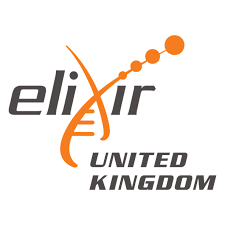
GtoPdb is requesting financial support from commercial users. Please see our sustainability page for more information.
Adenosine turnover: Introduction
Firstly, it is worth noting that all immune cells express receptors for adenosine [5]. It is suggested that adenosine exhibits pro-inflammatory effects through its A1 receptor, and anti-inflammatory effects through A2A receptor. Physiological and acutely increased levels of adenosine exert beneficial and protective effects, on the whole, regulating vasodilatation and reducing inflammation for example [3]. However, chronic overproducrion of adenosine in pathological states is associated with chronic inflammation, fibrosis and organ damage [4]. Adenosine has been discovered to play a major role in virtually every immune-related pathology including cancer, chronic pain, neurodegenerative conditions, rheumatoid arthritis, and many more [1]. In the case of neuroinflammation, the purinergic signaling system plays a myriad of functions throughout all stages of the inflammatory process (initiation, propagation and resolution), and pathophysiological inflammatory responses are established contributory mechanisms in the majority of pathological disorders of the central nervous system, including neuropsychiatric disorders [2]. A few of the most relevant in vivo experimental models used to investigate the role of adenosine signaling in inflammation include the use of mice with engineered mutations in adenosine kinase, adenosine deaminase, equilibrative nucleoside transporters, and CD73 (ecto-5'-nucleotidase). Harnessing the immunomodulatory actions of adenosine signaling for clinical benefit requires selectivity and targeted action, given the wide tissue distribution of adenosine receptors. Adenosine receptor antagonists and inhibitors of the enzymes and transporters responsible for the accumulation of extracellular adenosine can potentially provide local targeting of adenosine at the sites of adenosine release (at the sites of injury or inflammation for example). Such agents point towards the development of novel interventions with limited side effects.
References
1. Antonioli L, Blandizzi C, Pacher P, Haskó G. (2013) Immunity, inflammation and cancer: a leading role for adenosine. Nat Rev Cancer, 13 (12): 842-57. [PMID:24226193]
2. Beamer E, Gölöncsér F, Horváth G, Bekő K, Otrokocsi L, Koványi B, Sperlágh B. (2016) Purinergic mechanisms in neuroinflammation: An update from molecules to behavior. Neuropharmacology, 104: 94-104. [PMID:26384652]
3. Borea PA, Gessi S, Merighi S, Varani K. (2016) Adenosine as a Multi-Signalling Guardian Angel in Human Diseases: When, Where and How Does it Exert its Protective Effects?. Trends Pharmacol Sci, 37 (6): 419-34. [PMID:26944097]
4. Borea PA, Gessi S, Merighi S, Vincenzi F, Varani K. (2017) Pathological overproduction: the bad side of adenosine. Br J Pharmacol, 174 (13): 1945-1960. [PMID:28252203]
5. Haskó G, Linden J, Cronstein B, Pacher P. (2008) Adenosine receptors: therapeutic aspects for inflammatory and immune diseases. Nat Rev Drug Discov, 7 (9): 759-70. [PMID:18758473]







